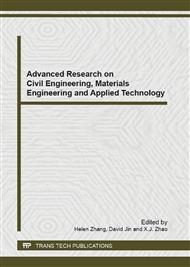p.19
p.23
p.28
p.33
p.43
p.48
p.52
p.56
p.60
Seismic Displacement Design Method Comparison between Chinese, American, European and Japanese Seismic Design Codes
Abstract:
Seismic displacement design method and allowable values of story drift are compared between Chinese, American, European and Japanese seismic design codes. An engineering example's seismic displacement is calculated in the methods given by the four codes, and story drift are compared. Researches show that allowable story drift of Chinese code under rare earthquake action is approximately close to that of American with a 10% probability of exceedance in 50 years, and allowable story drift of Japanese code is more rigorous than other three codes. For three-story three-span reinforced concrete frame structure, in the condition of same intensity, displacement of Chinese under the earthquake action with 2~3% exceeding probability of 50-year is greater than that of American and European with 10% exceeding probability of 50-year. However, intensity plays no role in Japan's displacement calculation, and the calculation result of displacement of Japanese code is less than other three codes.
Info:
Periodical:
Pages:
43-47
Citation:
Online since:
December 2013
Authors:
Price:
Сopyright:
© 2014 Trans Tech Publications Ltd. All Rights Reserved
Share:
Citation:


